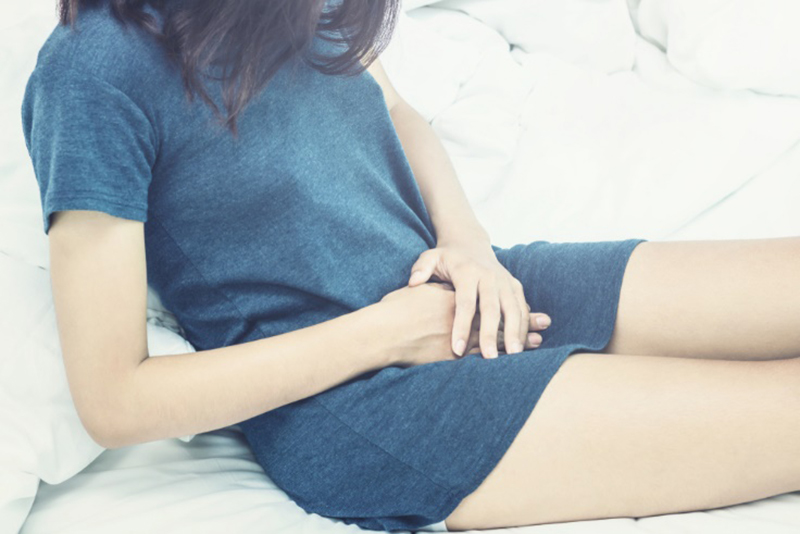One out of five women will experience at least one urinary tract infection in her life. It’s no fun to suffer with a burning sensation, a persistent urge to go and painful urination when you do. If you’re one of the women who have dealt with this, you know that UTI symptoms can be a misery.

What Causes A UTI?
Your urinary tract consists of your kidneys, ureters, bladder and urethra. Urine is made in the kidneys and travels down tubes called ureters to the bladder where it empties from the body via a tube called a urethra. A urinary tract infection, also known as a bladder infection, is caused by bacteria that take a reverse trip up the urethra and from there travel to the bladder.
Left untreated, bacteria can cling to the lining of the bladder and inflame it, causing a condition known as cystitis. Bacteria can also travel from the bladder to the kidneys and cause an infection there as well.
Why Do Women Get UTIs More Often Than Men Do?
It’s a matter of anatomy. Women’s urethras are shorter and straighter than men’s are, so the bacteria have a more direct route to the bladder. Since holding in a full bladder is also a cause of UTIs, it’s also possible that women get the infections more frequently because of a habit of putting off going to the bathroom.
And because life isn’t fair, women are susceptible to UTIs if they have frequent sexual intercourse, use a diaphragm and a spermicide for birth control or don’t hop up and pee right after they have intercourse.
Can You Cure a UTI Yourself?
Nope. You can relieve the symptoms with an over-the-counter pain reliever and by drinking lots of water to help flush the bacteria out. But the only way to cure a UTI is to take yourself to a medical professional for a treatment of antibiotics. Depending upon the severity of your infection, and other considerations, the course of antibiotics will be either three or seven days.
To check off another box on the life-isn’t-fair list, one of the side effects of taking antibiotics can be an overgrowth of yeast, which causes an unpleasant rash and yeast vaginitis. To counteract this side effect, use an over-the-counter antifungal medication (available as a cream, ointment, tablet or suppository, which you use for up to a week), or ask your medical provider for a prescription for Diflucan, a single-dose tablet that will forestall a yeast infection while you’re on antibiotics.
What About Cranberry Juice?
Drinking 100-percent cranberry juice (not cranberry juice cocktail) can be helpful in preventing a UTI, but it can’t cure one after you’ve gotten it. The active compounds in the juice aren’t destroyed by the digestive tract, so they hang around to combat bacteria including E. coli. Cranberry juice is also a diuretic, which helps to flush out your system. So while drinking cranberry juice won’t cure a UTI, it certainly doesn’t hurt to drink it.

There are a number of foods and drinks that should be avoided when you’re in the throes of a UTI:
- Citrus fruit. The acids in citrus fruit can irritate your kidneys. That means no oranges, grapefruit, lemons, limes or those adorable little Cuties.
- Other acidic foods. You probably don’t think about it, but tomatoes are highly acidic. And there’s enough acid in pineapple, apples, peaches, plums, grapes and strawberries to put them on the list to avoid when you’ve got a UTI.
- Caffeine is proven to irritate the bladder and make UTI symptoms worse. Even decaf coffee has some caffeine in it, so totally decaffeinate yourself for the duration and try herbal tea instead.
- Hard liquor, wine and beer are off the approved list when you’ve got a UTI. Not only can they irritate the bladder, but they’re also taboo if you’re taking an antibiotic.
- Carbonated drinks. Sodas will aggravate UTI symptoms, so drink cranberry juice or plain water without lemon.
- Spicy stuff. Hot sauce, chilis, peppers, curries, anything that sets your mouth afire is going to do the same thing to your urinary tract. You’re already giving up your morning coffee and your nightly drink, so you may as well continue boring yourself to pieces for a few days.
- This is the one thing you should ingest more of than you usually do. It might feel like adding insult to injury because the more water you drink the more you have to go to the bathroom, but water will flush out the kidneys and bladder and the hydration will help deliver the antibiotic to the urinary tract.
Comments
comments